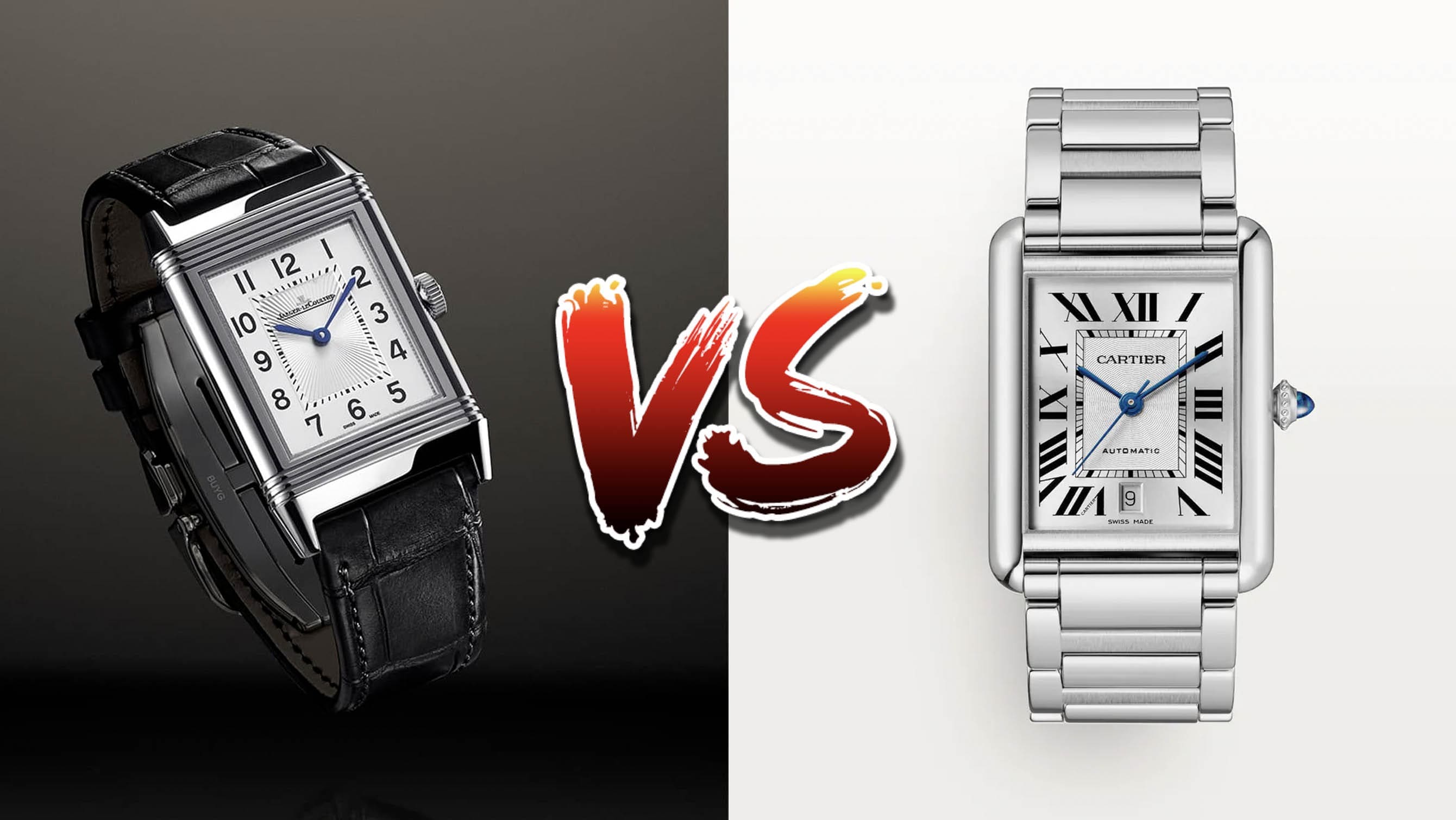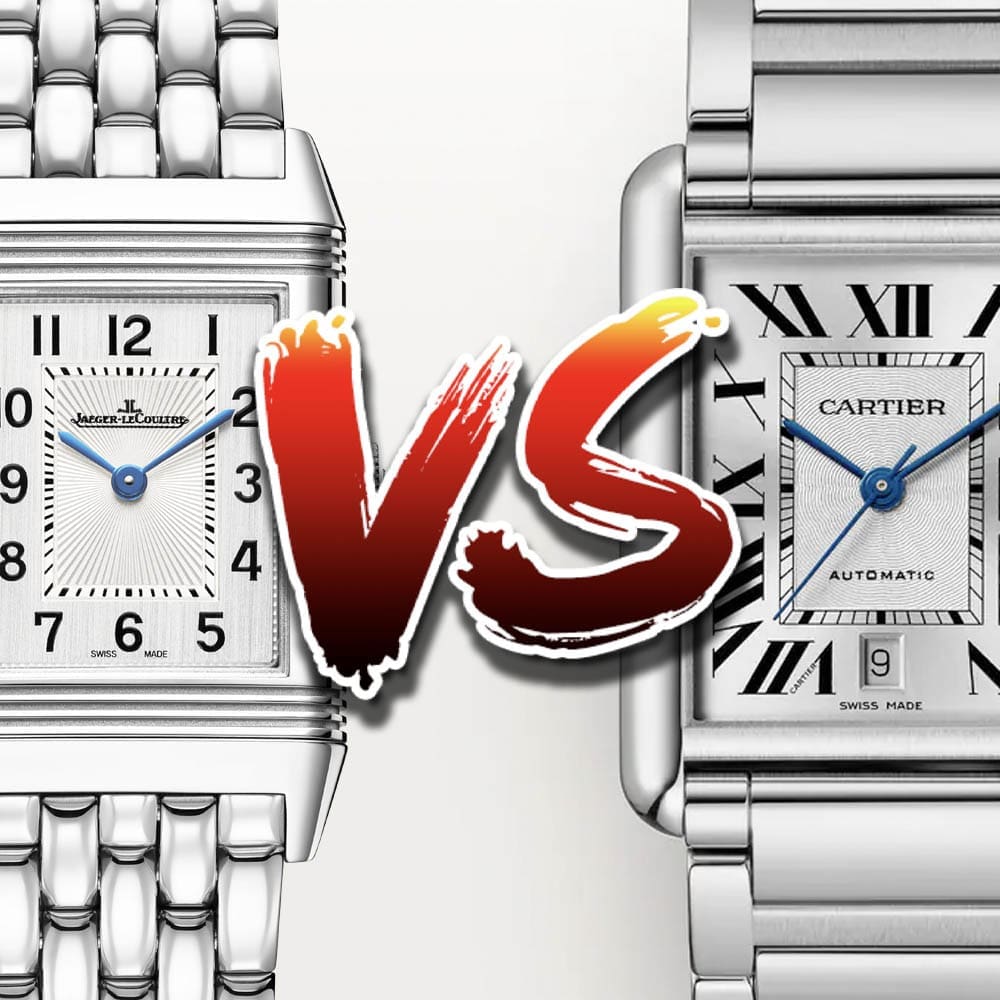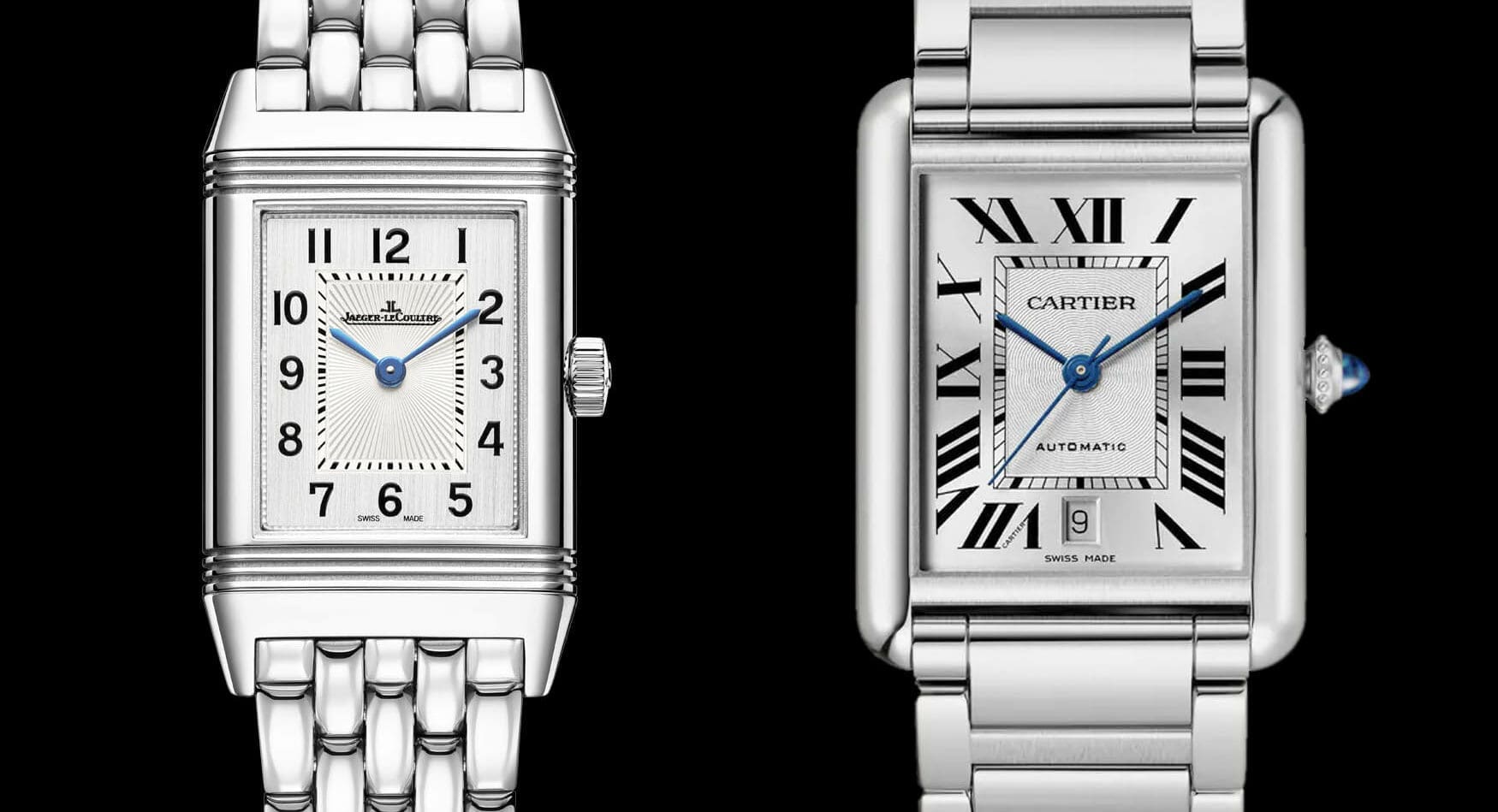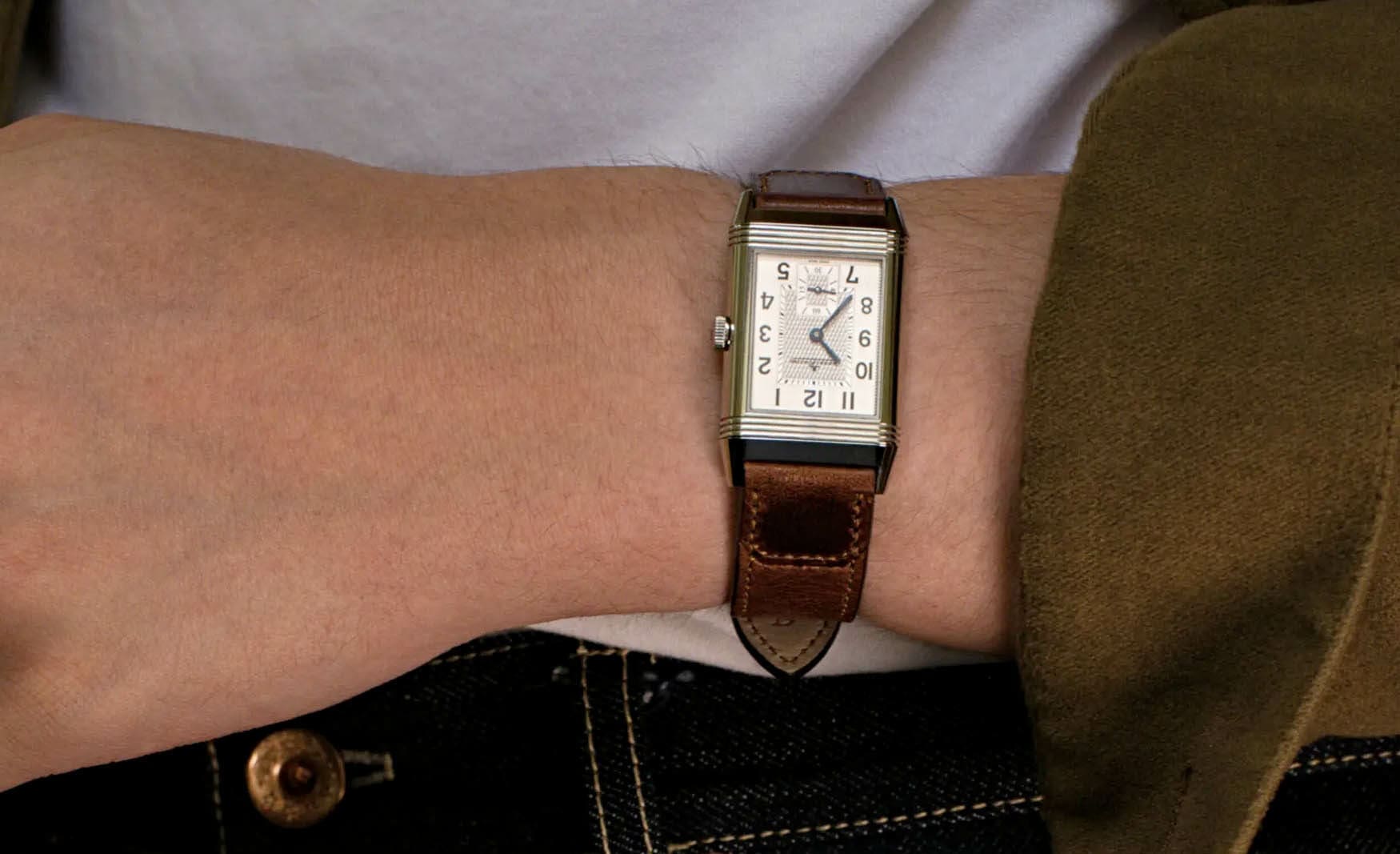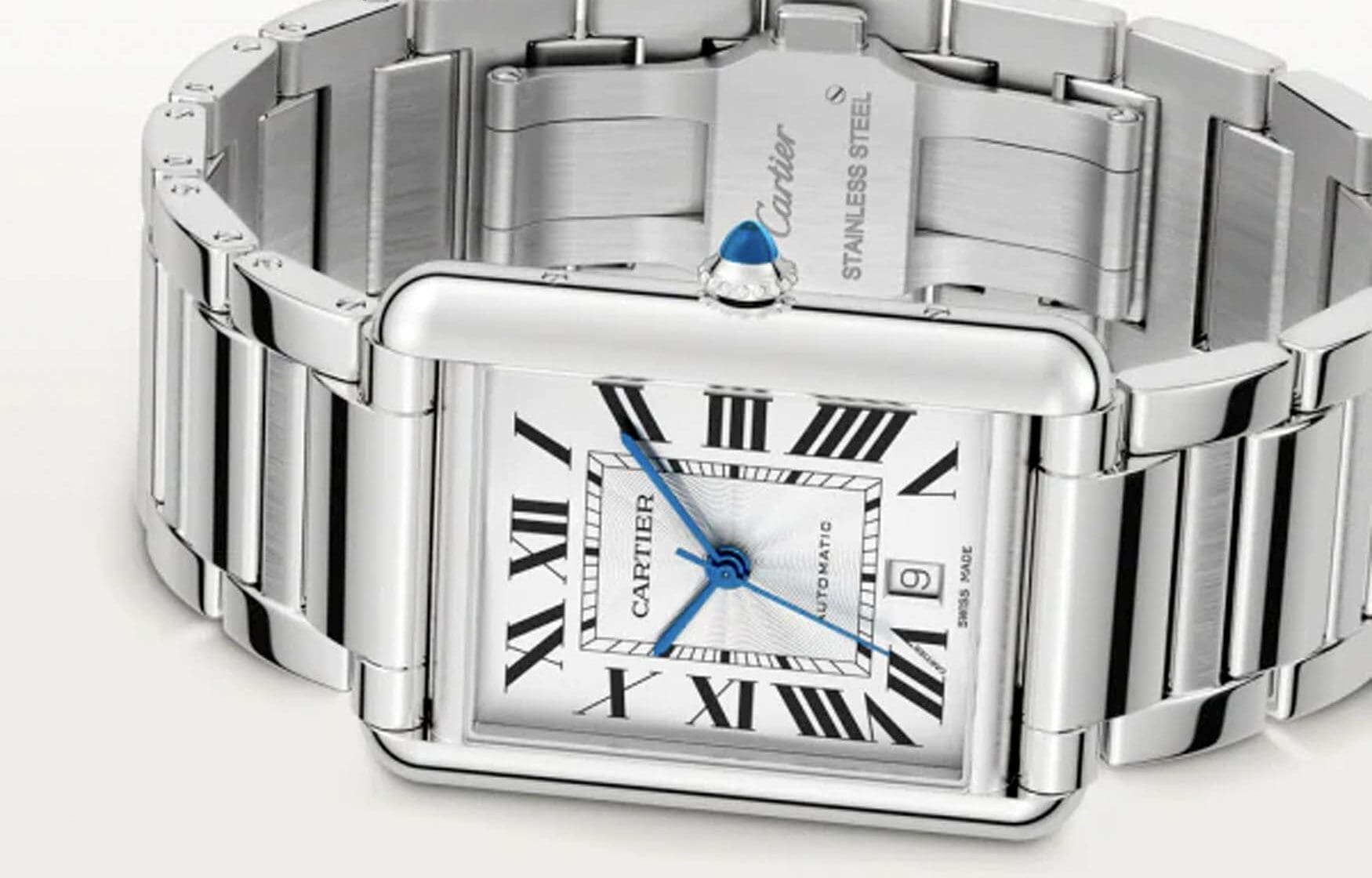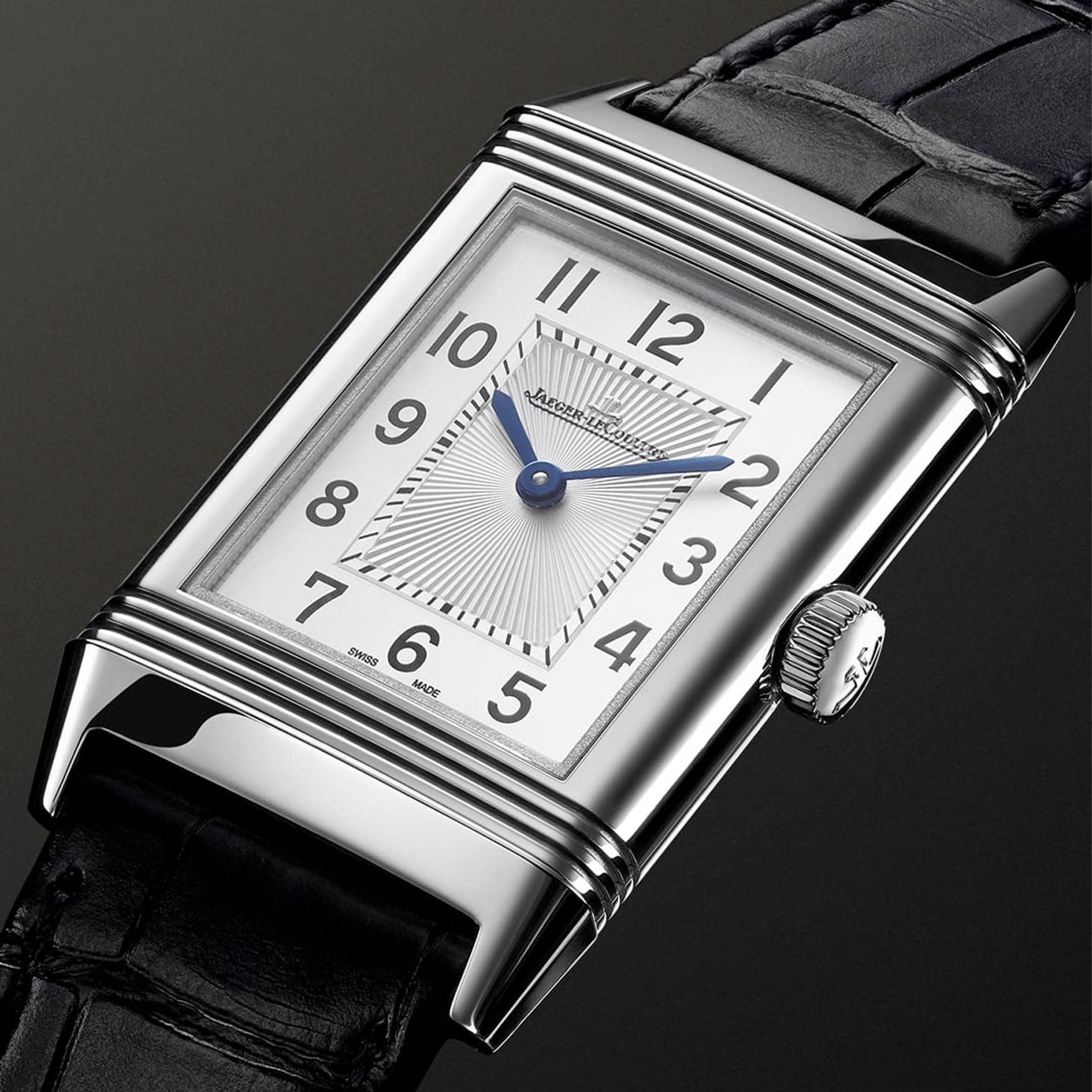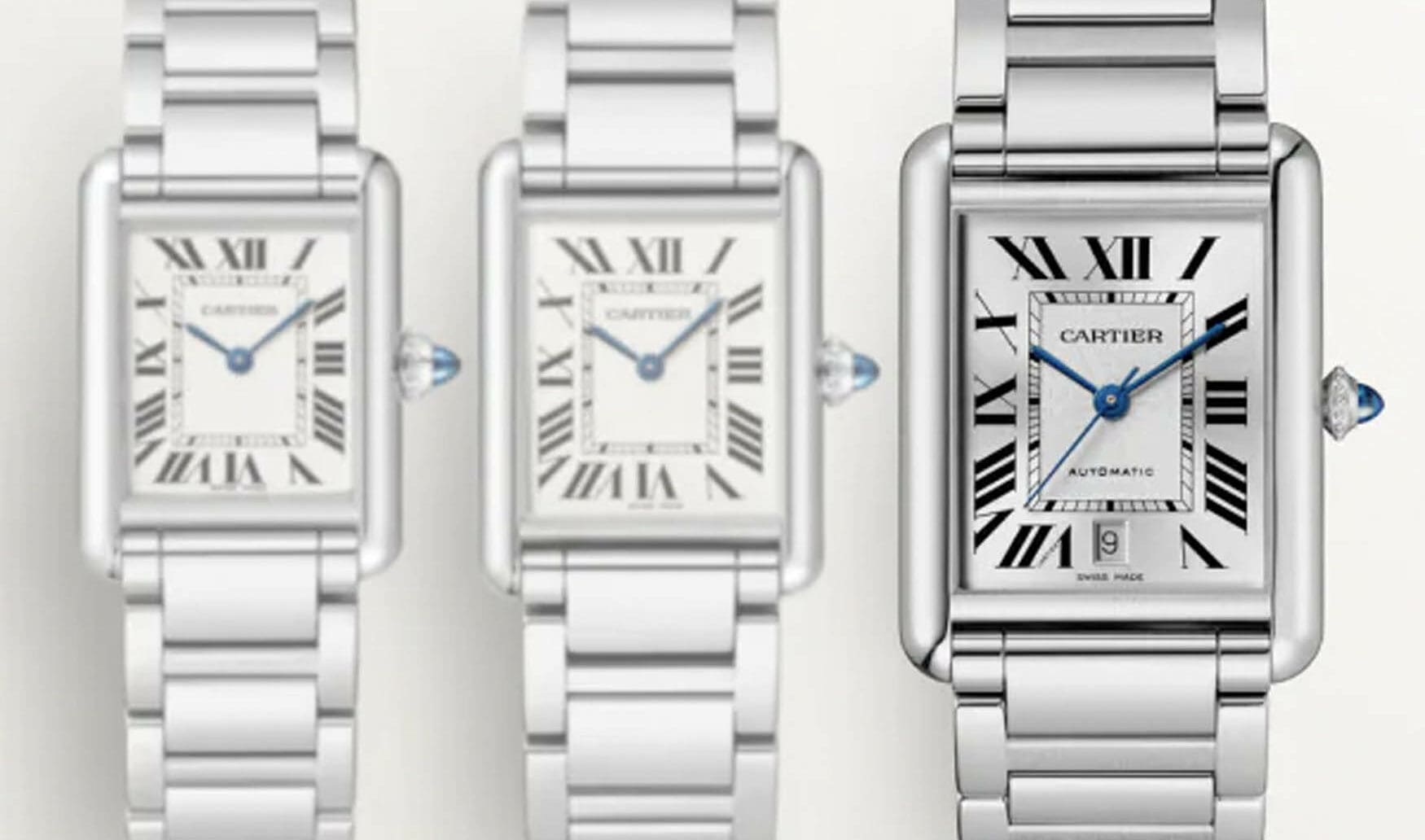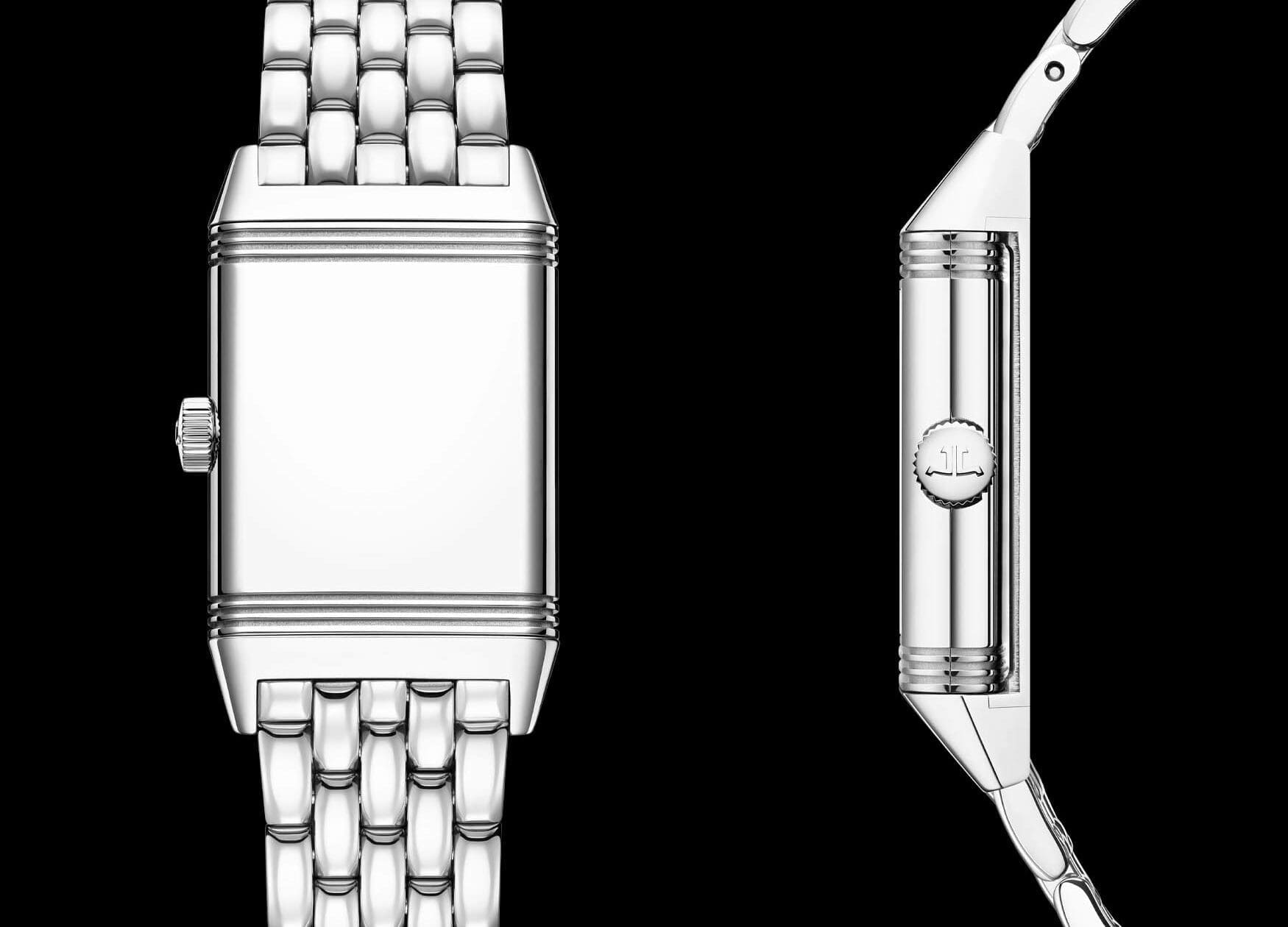Jaeger-LeCoultre Reverso and Cartier Tank- how do the two icons stack up?
Fergus NashWhen it comes to rectangular watches, there are pretty much only two titans. Brands which release their own will inevitably be compared to them, and for good reason. For nearly a century, these two watches have been at the forefront of fashion whether it’s formal, casual, or even sporty. They are the Cartier Tank and the Jaeger-LeCoultre Reverso, each holding a significant place in the history and style of wristwatches. Although they now differ in some vast ways regarding the level of complication, price, and the flipping mechanism, I still believe that they’re competitors for the rectangular crown. For the sake of comparison we’ll be using the extra-large Tank Must and the Reverso Classic, however there are plenty of variations to choose from when factoring in materials and complication.
| Brand | Jaeger-LeCoultre | Cartier |
| Model | Reverso Classic Monoface | Tank Must Extra-Large |
| Reference Number | Q2608140 | WSTA0053 |
| Case Dimensions | 21mm (W) x 7.4mm (T) x 35.78mm (LTL) | 31mm (W) x 8.4mm (T) x 41mm (LTL) |
| Case Material | Stainless steel | Stainless steel |
| Water Resistance | 3 bar | 3 bar |
| Crystal(s) | Sapphire | Sapphire |
| Dial | Silvered grey guilloché | Silvered |
| Strap | Five-link steel bracelet | H-link steel bracelet |
| Movement | Calibre 846, in-house, manual winding | 1847 MC, in-house, automatic |
| Power Reserve | 38 hours | 42 hours |
| Functions | Hours, minutes | Hours, minutes, seconds, date |
| Availability | Available now | Available now |
| Price | A$14,100 | A$7,950 |
Common ground – heritage and versatility
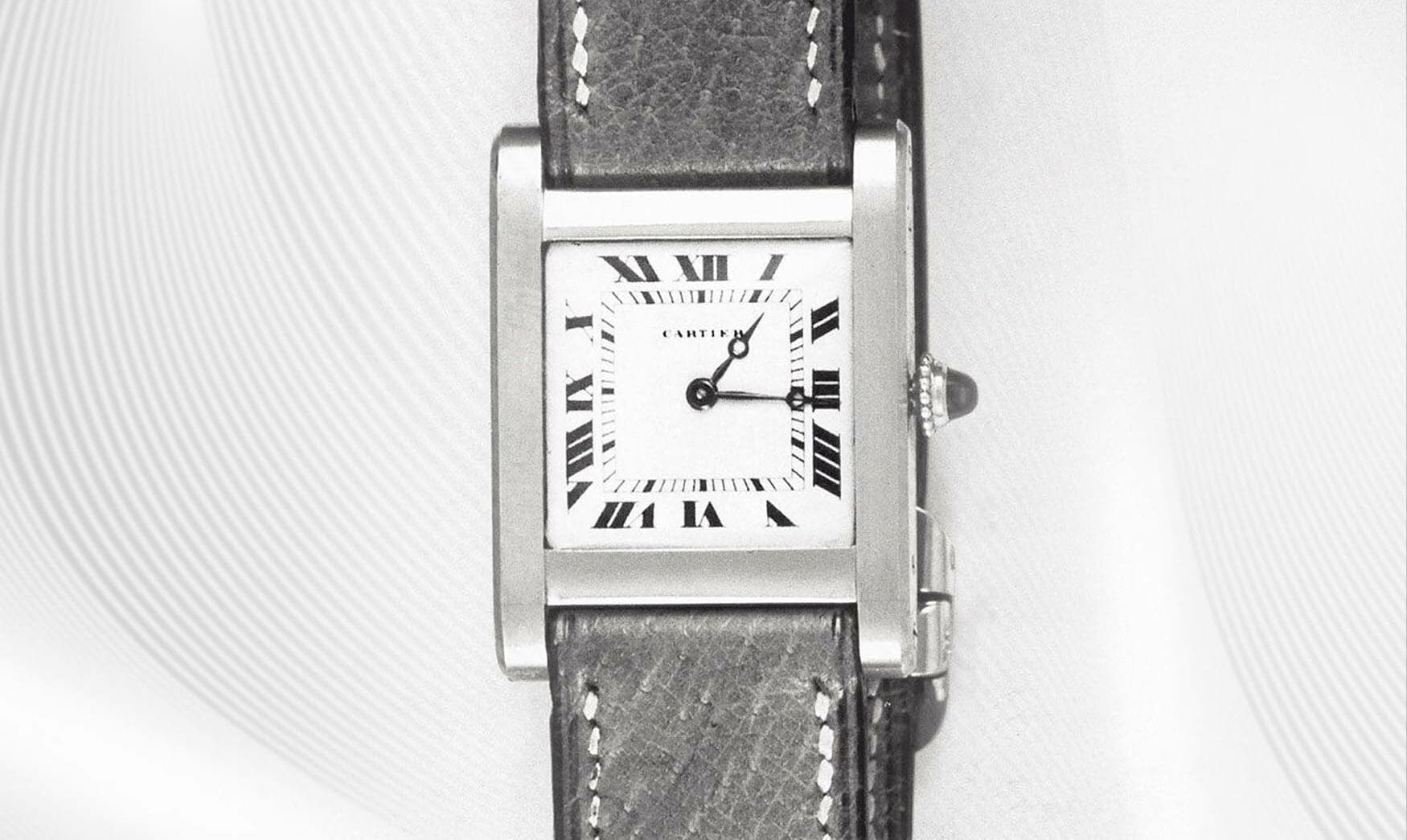
Louis Cartier created the Tank’s first prototype in 1917, basing the shape of the case on the thick tracks on either side of a Renault FT-17. It reached the public in 1919 with only six units, and exploded in popularity throughout the 1920s. The Jaeger-LeCoultre Reverso was a little later to the party being released in 1931, incorporating Art Deco design and a reversible case to protect the crystal during polo matches. Some might say that Cartier was just a jewellery brand while Jaeger-LeCoultre was an established watchmaker, but many of those early Cartier Tanks actually used “European Watch & Clock Co” movements which were built by Jaeger-LeCoultre, making them equal horological contenders. Both designs represent the pinnacle of early 20th-century design, when wristwatches were still a relatively new concept and the ‘rules’ were still being formed.
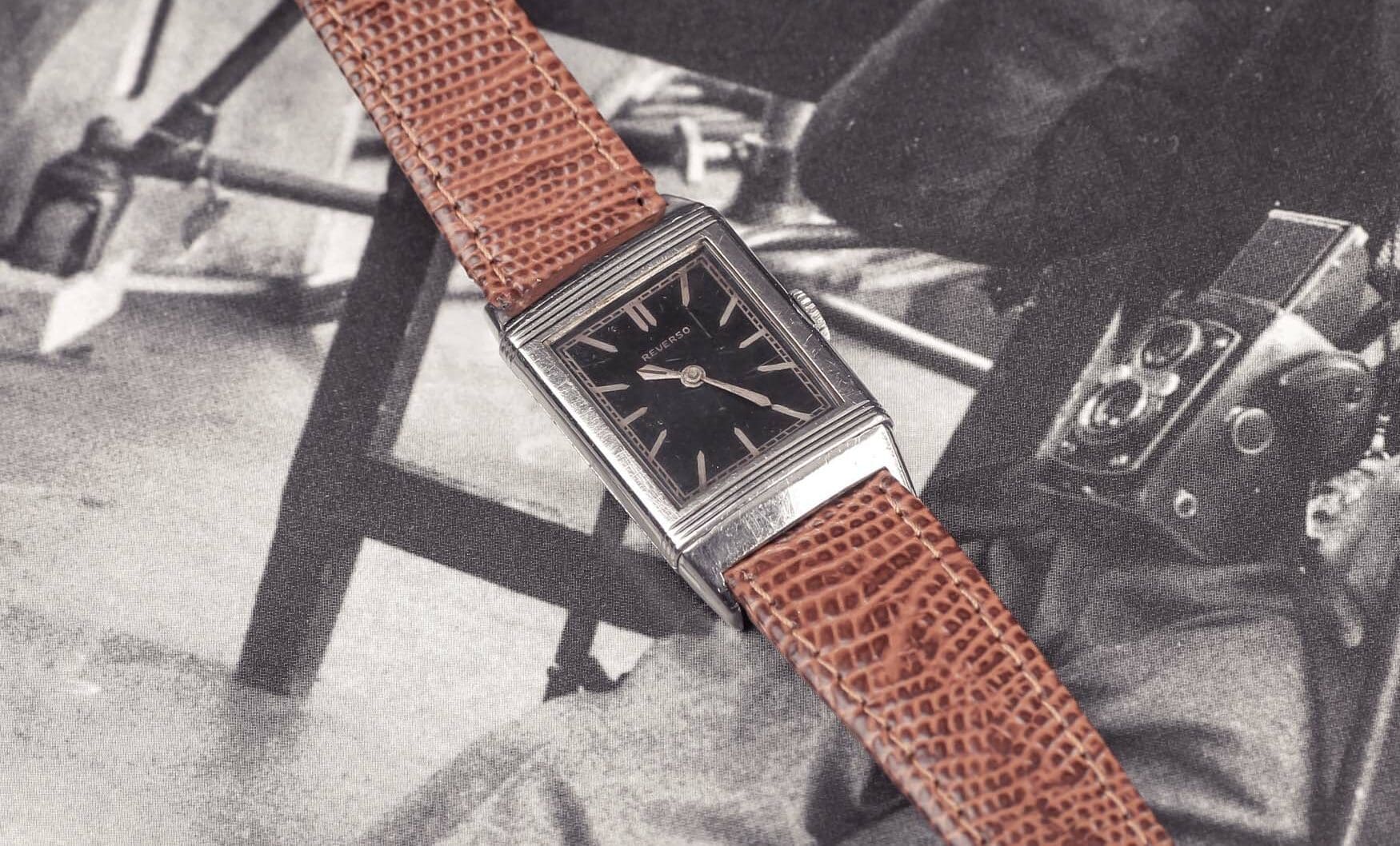
The greatest aspect of the Cartier Tank and the Jaeger-LeCoultre Reverso is that they’re not just simple rectangles, but the cases are sculptures in their own right. The proportions are fantastic, and they’re detailed enough to be interesting without being distracting. The result is a watch that’s incredibly versatile in many different configurations, and it will look great no matter what it’s worn with. Although they’d most likely be classed as dress watches these days, they’ll look just as at home in jeans and a t-shirt as with formalwear.
One similarity that needs addressing is actually their variety. While we would usually focus on two directly-competing references in a head-to-head like this, it’s the spirit of the Tank and Reverso which is really at hand here. The Cartier Tank Must Extra-Large is far more casual than the Reverso Tribute, but you could go for a quartz model if you don’t want the date display, or head up in price for one in a precious metal. The Jaeger-LeCoultre Reverso is also available for less money with quartz movements, in varying styles from traditional to colourful and flashy.
Where each stands on its own – price, popularity and function
Despite being called an ‘extra-large’, the Cartier is actually not that much bigger than the Reverso Classic in these references. That said, rectangular watches wear very differently to circular ones. Diameter is a bit less important than the case length for wearability, and the Reverso is 35.78mm long in comparison to the 41mm Tank. This is the smallest of the mechanical Reversos, but they do tend to wear a bit larger than you’d expect. Even the 45.6mm length of the Reverso Tribute can seem a little bit bulky on an average wrist. Meanwhile, the Cartier Tanks have shorter lug-to-lug distances because they don’t need to fit the flipping mechanism. Truthfully, both designs are incredibly gender-neutral unless you’re looking at something with a pink dial and diamonds, so you should try the available sizes on at a boutique and see which fits best on your wrist.
The question of price is certainly a valid one, as these two references are more than A$6,000 apart. I chose them because they’re the cheapest mechanical watches in each range, and they both have silver dials in steel cases. This allows the most direct comparison between the characters of each watch, but exposes somewhat of a chasm in affordability. Both use in-house movements, but the Cartier’s 1847 MC is more fully featured on paper. It’s got a 28,800vph beat rate for a smooth sweep of the seconds hand, automatic winding, a date display, and a 42-hour power reserve. Meanwhile, the Calibre 847 from Jaeger-LeCoultre beats at 21,600vph, is manually-wound and has a 38-hour power reserve. The beat rate isn’t much of an issue with the Reverso Classic as it doesn’t have a seconds hand, and the Cartier 1847 MC is still more of a mass-produced item than the Jaeger-LeCoultre. The difference in price can be chalked up to each brand’s production methods and level of finishing, as well as a generally higher level of prestige for Jaeger-LeCoultre.
Another factor is the general exclusivity of each watch. Neither of them are particularly rare or hard to get, but the Cartier Tank is much more likely to be seen on a day-to-day basis. In fact, Cartier are one of the most popular Swiss watch brands in the world, certainly in the top three along with Rolex and Omega. In 2021, Cartier sold 600,000 units compared to just 95,000 for Jaeger-LeCoultre. The general scale in which each business operates is vastly different, with Cartier supplying a higher demand to the public. That may make the Tank more readily recognised and appreciated, however the Reverso will generally make enthusiasts more excited to spot in the wild.
Finally, we have to consider the actual novelty of the Reverso’s famous flipping feature. It’s part of what makes it so special, and provides a bit of sensory feedback as well as a more prominent location for possible engravings. In the higher-end ranges, it opens up the opportunity for Duoface models that essentially give you two watches in one. There is of course the Cartier Tank Basculante with its own vertically-flipping dial that can double as a desk clock, but they’re not currently in production and will always be seen as an alternative to the Reverso.
The verdict
Both the Cartier Tank and the Jaeger-LeCoultre Reverso have definitely earned their place in the wristwatch hall of fame, and they will continue to share the top spot in the category of rectangular watches. Budget will play a large part in your decision between the two, but you may find that if you can afford the Reverso then you may be swayed by a Tank in a gold case. Between these references, my choice would be the Reverso Classic because I’m a fan of smaller sizes, however if I were to dig a little deeper I’d probably go for the small-sized Tank Must SolarBeat. As much as I respect the craftsmanship and legacy of Jaeger-LeCoultre, the Cartier brand name is much closer to my heart. The Tank is by no means just a budget alternative to the Reverso, just as the Reverso is not simply a higher level of luxury than the Tank. There are many factors at play, and one of them is bound to evoke a stronger response from different viewers.




